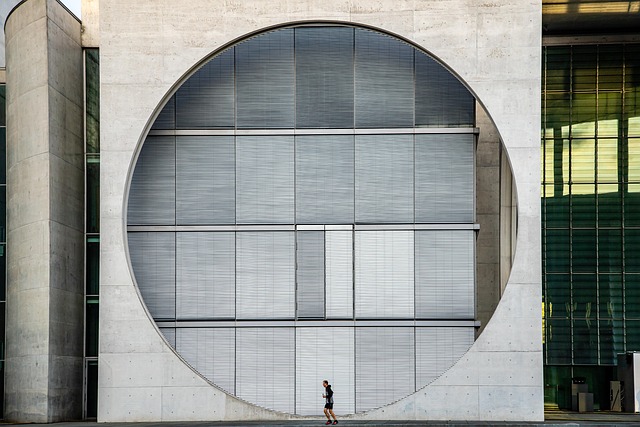Drone technology revolutionizes structural analysis and planning through advanced 3D modeling. Cost-effective and efficient, drones capture high-resolution data for precise digital representations of structures, landscapes, and complex geometries. This enables engineers, architects, and urban planners to make informed decisions regarding design, construction, renovation, and compliance with building codes. Structural 3D modeling assists in identifying weaknesses, evaluating feasibility, and enhancing safety in challenging environments.
Drone-assisted 3D modeling is transforming site analysis, offering unprecedented accuracy and efficiency for structural assessments. This innovative technology captures detailed aerial data, enabling precise digital representations of physical spaces.
This article explores the fusion of drone technology and structural 3D modeling, highlighting its advantages in site assessment. We delve into the process, from data capture to model creation, and discover how this approach enhances building and infrastructure planning.
Understanding Drone Technology for Structural Analysis
Drone technology has emerged as a powerful tool in the field of structural analysis, offering unprecedented precision and efficiency for site assessment. These unmanned aerial vehicles (UAVs) are equipped with advanced cameras and sensors capable of capturing high-resolution data from various angles. By utilizing drone-assisted 3D modeling, engineers and architects can create detailed digital representations of physical structures or construction sites. This technology facilitates a comprehensive understanding of complex geometry, enabling precise structural analysis.
Structural 3D modeling through drones provides an accurate and cost-effective alternative to traditional methods. It allows for the rapid generation of models, which are then used to analyze stress distribution, identify potential weaknesses, and ensure compliance with building codes. The data collected by drones can be seamlessly integrated into specialized software, enabling professionals to make informed decisions and optimize design processes. This innovative approach is particularly valuable in challenging environments where manual measurement may be difficult or hazardous.
Advantages of 3D Modeling in Site Assessment
Drone-based 3D modeling offers a revolutionary approach to site analysis, providing numerous advantages over traditional methods. This technology allows for the rapid creation of highly accurate structural 3D models, offering a detailed digital representation of a site’s physical characteristics. With drones capturing extensive aerial imagery, these models can include precise measurements and topographical data, enabling comprehensive assessments.
Compared to manual surveying, drone-assisted 3D modeling is more efficient and cost-effective. It reduces the time required for site analysis by automating the data collection process, minimizing the need for on-site inspections in hazardous or hard-to-reach areas. This not only enhances safety but also provides valuable insights into complex landscapes, aiding in informed decision-making during construction, urban planning, or environmental projects.
The Process: From Data Capture to Model Creation
The process of drone-assisted 3D modeling for site analysis involves several key steps, starting with data capture and ending with model creation. First, a drone equipped with high-resolution cameras and LiDAR sensors is deployed to collect detailed imagery and spatial data of the site. This technology captures both visual and topological information, ensuring precise representation of the landscape. The collected data is then processed using specialized software, which generates point clouds—a 3D representation of the surface points captured during the flight.
Through advanced algorithms, these point clouds are further refined to create a structured 3D model. This structural 3D modeling process involves filtering, registration, and texture mapping to enhance accuracy and visual clarity. The end result is a detailed digital duplicate of the site, complete with topographical features, buildings, and surrounding structures, which can be used for comprehensive analysis, planning, or design purposes.
Applications: Enhancing Building and Infrastructure Planning
Drone-assisted 3D modeling is transforming building and infrastructure planning by providing highly accurate site analysis data. By capturing detailed aerial imagery, drones enable the creation of precise structural 3D models that offer a comprehensive view of existing structures and surrounding landscapes. This technology allows urban planners and architects to make informed decisions about new construction projects, identifying potential challenges and opportunities with unprecedented clarity.
The integration of drone-derived 3D modeling into planning processes enhances efficiency and reduces costs associated with traditional survey methods. It facilitates more effective site assessment, enabling stakeholders to visualize and analyze complex geometries, identify structural elements at risk, and evaluate the feasibility of renovation or expansion projects. This advanced technology is a game-changer for infrastructure development, ensuring that every construction initiative is grounded in robust data-driven insights.
Drone-assisted 3D modeling is transforming site analysis, offering unprecedented accuracy and efficiency in structural assessments. By leveraging advanced drone technology, professionals can capture detailed data from various angles, enabling precise 3D model creation. This innovative approach significantly enhances building and infrastructure planning by providing comprehensive insights into site conditions, ensuring informed decision-making for safer, more efficient construction projects. Structural 3D modeling powered by drones is a game-changer that promises to revolutionize the way we approach site analysis.
